Chromebooks are considered great devices for many use cases due to their simplicity and integration with apps from other platforms. This wasn’t the case until Android and Linux support rolled out to the platform. Since Chromebooks have less storage than regular Windows laptops, managing storage alongside Linux containers and Android apps can be challenging. If you’re struggling to manage storage, here are some ways to free up space on a Chromebook.
Besides Android and Chrome apps taking up a lot of space, Linux containers and apps also take up tons of space, especially if you prefer Flatpaks over DEB packages. You can free up space by refactoring Linux storage and removing non-essential items.
How to Check Your Chromebook’s Storage
Before you start the steps to manage your Chromebook’s storage, it’s important to know exactly what items are taking up the most storage space on your Chromebook. You can easily check the storage distribution by going to Storage Management in Settings. Here’s how to do it.
- Access to ChromeOS Settings > System Preferences.
- Click on Storage Management.
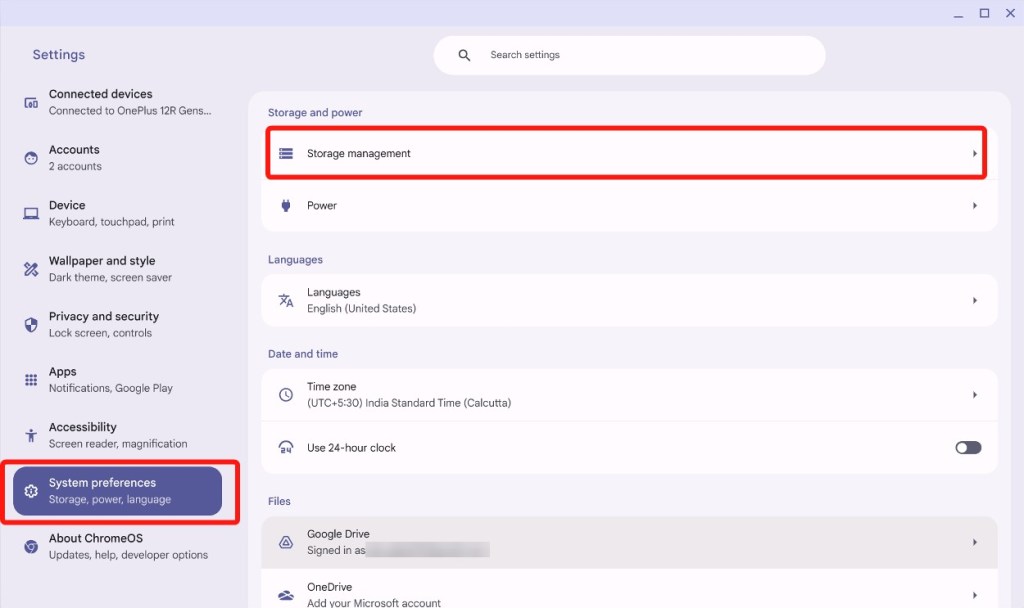
- You should now see your Chromebook’s storage divided between apps and platforms.
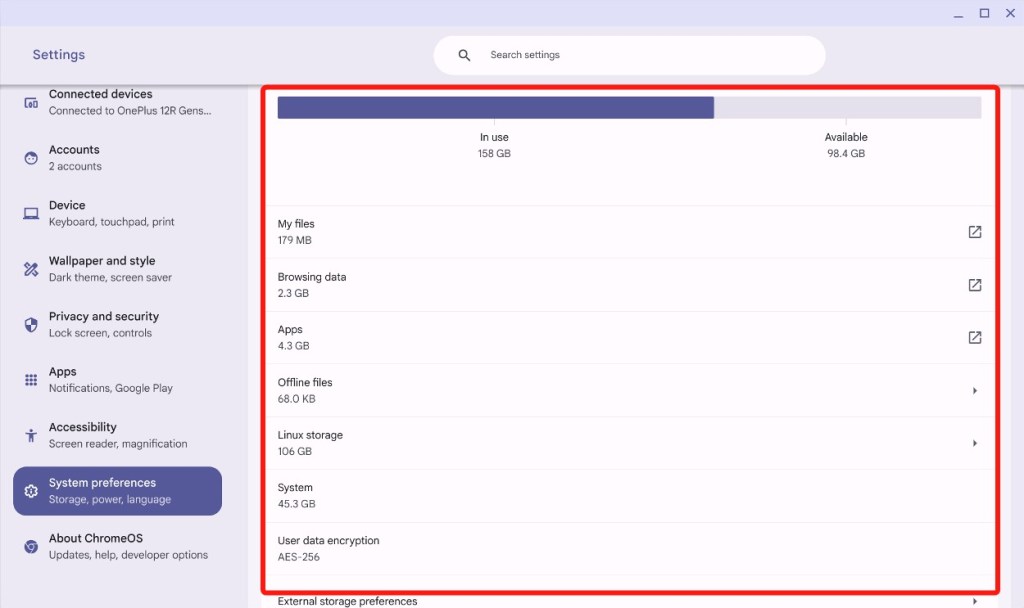
This will give you an idea of which platform is taking up the most storage. From there, you can ideally start by removing unnecessary items from specific sections.
Free up storage space on Chromebook
If you’re running out of space on your Chromebook, the following methods can help you clear some of it so you can use ChromeOS like before again.
Method 1: Delete files to free up storage space
The easiest way to free up storage space on your Chromebook is to delete downloaded files and folders from the Chromebook’s file manager.
- Launch the Files application and go to Downloads.
- Right-click on a file and select Move to Trash.
- You can select multiple files using the Shift + Down key Or Ctrl + left click keyboard shortcut on your Chromebook.
- Delete the selected files using the key Alt + Backspace shortcut, because Chromebooks don’t have a Delete key.
- Now go to the Trash folder and click on Empty the trash now.
You should keep in mind that files you delete once cannot be restored. You can also check out our dedicated guide on how to delete files on Chromebook for other options.
Method 2: Clearing the browser cache
As you browse the internet, data tends to accumulate in your browser in the form of a cache, which helps load resources faster the next time you visit the same web pages. Clearing the cache will have no impact on your Chromebook and will free up space.
- Launch Chrome > type
chrome://settingsin the address bar > press the key Enter key. - From there, head towards Privacy and Security > Delete browsing data.
- Uncheck the box Browsing history Cookies and other data boxes.
- Click on the Time slot drop-down menu and select All the Time.
- Now click on Delete data to confirm.
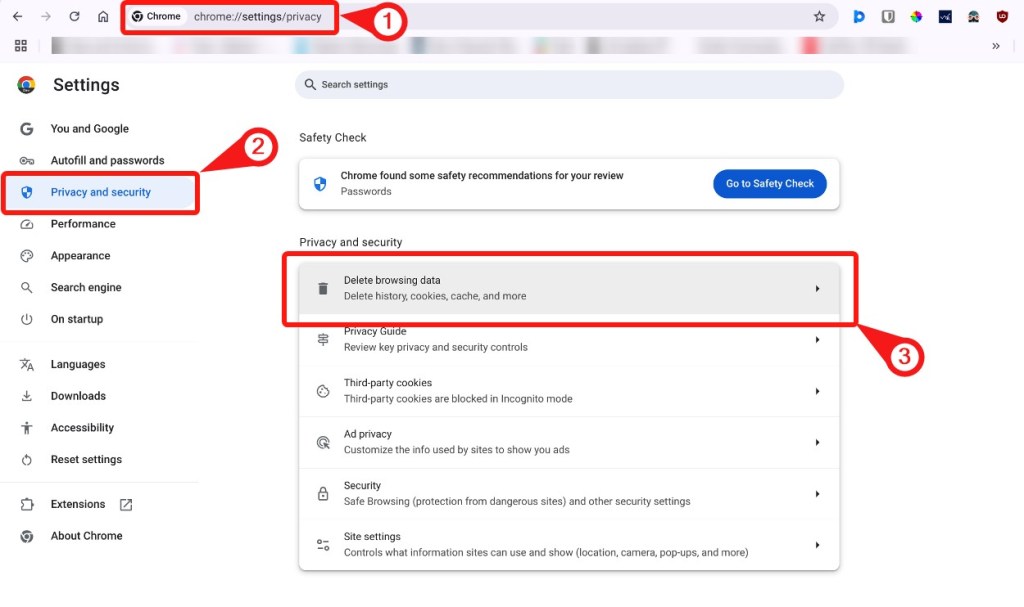

Method 3: Delete Chrome and Android Apps
Chrome and Android apps don’t typically take up as much storage space as Linux apps, but given the sheer number of apps and games you can download, they can quickly eat up storage space. Here’s how to delete Chrome and Android apps on Chromebook to free up space.
- Go to Settings > Applications > Manage your applications.
- From there, select an app you want to uninstall.
- Click on Uninstall top right.
Method 4: Delete or Repartition Linux Storage
One of the easiest ways to restore storage on a Chromebook is to repartition the Linux container storage or delete it if you no longer need it.
- Access to Settings > About ChromeOS.
- Select Linux Development Environment on the next screen.
- Click on Change in the “Disk Size” section and drag the slider to the left to reduce Linux storage.
- When finished, click on Resize and your Linux partition will be resized.
- If you no longer need Linux, click Withdraw in the “Remove Linux Development Environment” section and your device storage will be freed up.
Method 5: Wipe local data using the drive’s internals
Internal Drive Files contains local data files used to store the Offline folder cache. Here’s how to delete it to free up storage space on your Chromebook.
- Launch Chromium > type
chrome://drive-internals> Hit the Enter key. - Here, click on Clear local data.
- ChromeOS will now get rid of files already available in the cloud.
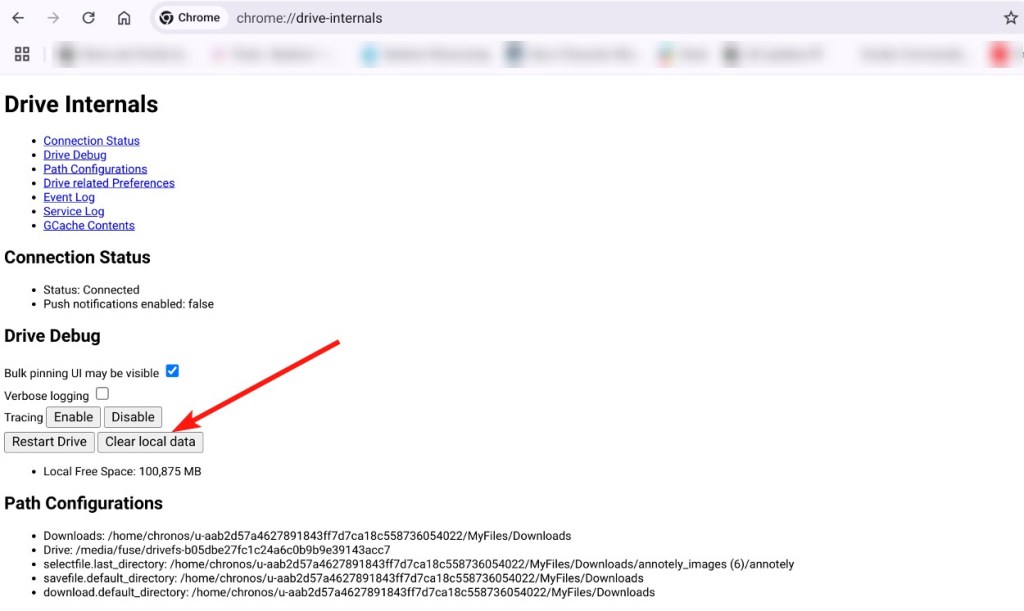
Method 6: Move Files to Google Drive
ChromeOS was built to leverage Google Drive, and since it has native support for Google Drive, moving files from the operating system to it is pretty straightforward. It’s also a great way to free up storage space on your Chromebook.
- Launch the Files application and select the files you want to move to Google Drive.
- Drag the file you want to move onto the “Google Drive” label.
- The label will expand and show you all the folders.
- Drop the file/folder into a folder and the files will be transferred.

You can also use the Google Quick Share feature to quickly share files from Chromebook to Android devices.
Method 7: Delete unused user accounts
If you have a user account from a friend or family member who created an account just to test the Chromebook, you should delete it to free up storage space on the Chromebook.
Multiple user accounts tend to take up a lot of storage space. Note that you can only delete other user accounts if you are the owner of the Chromebook, who happens to be the first user to sign in to the device. To remove the owner account, you need to reset/wipe your Chromebook.
You can delete user accounts on the login screen. Simply click the button arrow icon and select Delete account.
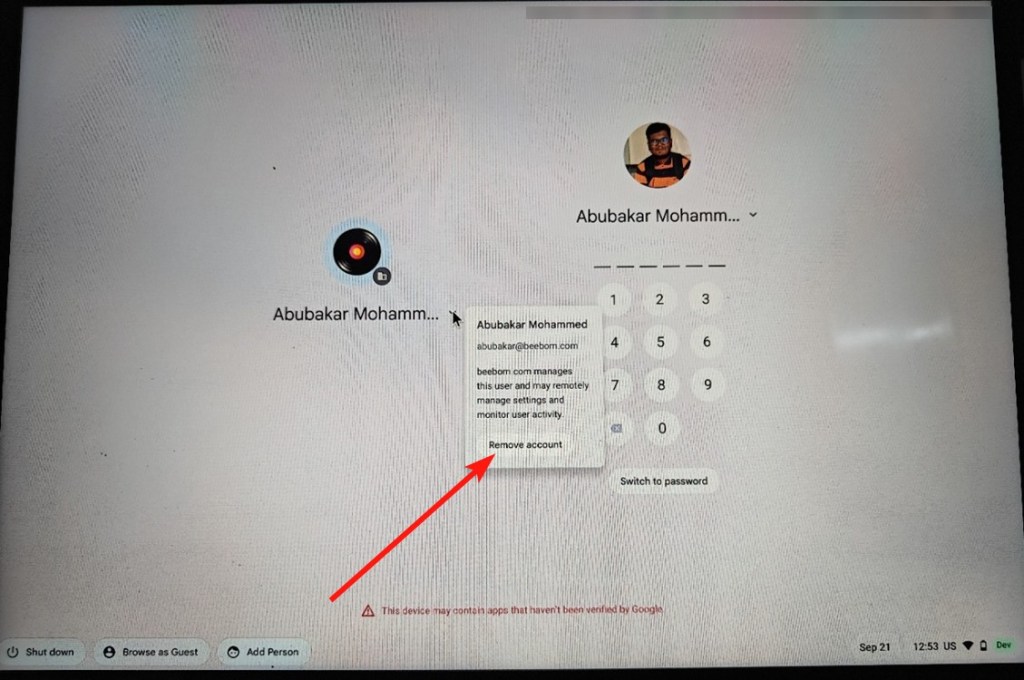
Method 8: Power Wash Your Chromebook
If none of the above methods to free up storage space on Chrome OS worked for you, your last resort is to power-clean your Chromebook. Power-cleaning is the equivalent of factory resetting your Chromebook and will restore your Chromebook to a factory state.
Keep in mind that this will delete all your local files stored in the internal storage. Therefore, make sure to back up all your important files and folders. We have a detailed guide on how to Powerwash a Chromebook, but if you’re looking for a TL;DR:
To pressure clean your Chromebook, go to Settings > Advance > Reset settings > Reset. Now your Chromebook will restart and reset to factory settings.
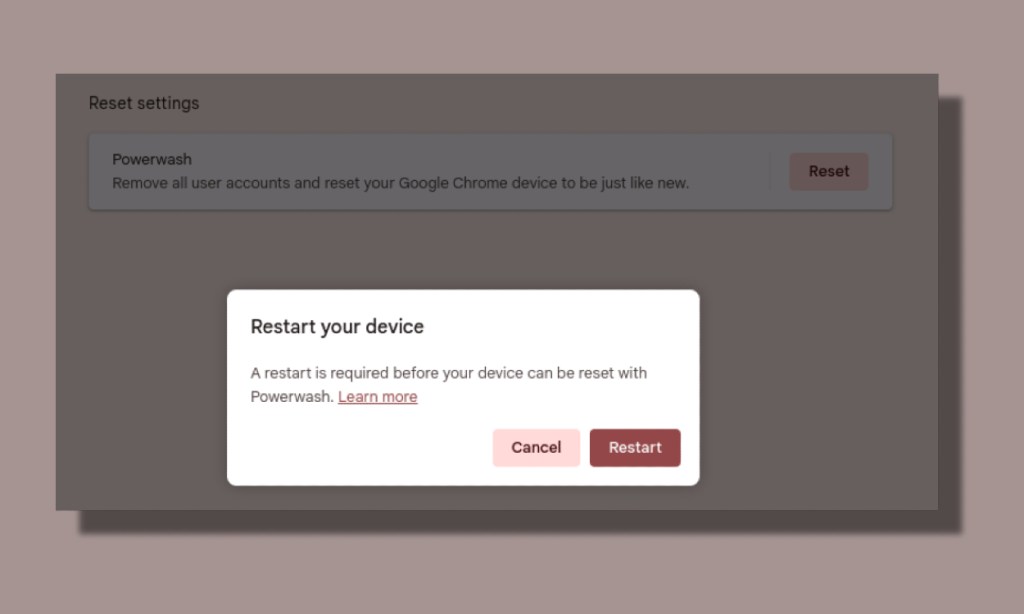
Freeing up space on your Chromebook can be helpful, especially if you want to play some of the best Chromebook games through Steam. Additionally, once you free up space, you can expand the Linux partition to install more Linux desktop apps like VS Code and use software development or productivity tools.
Related Articles:








